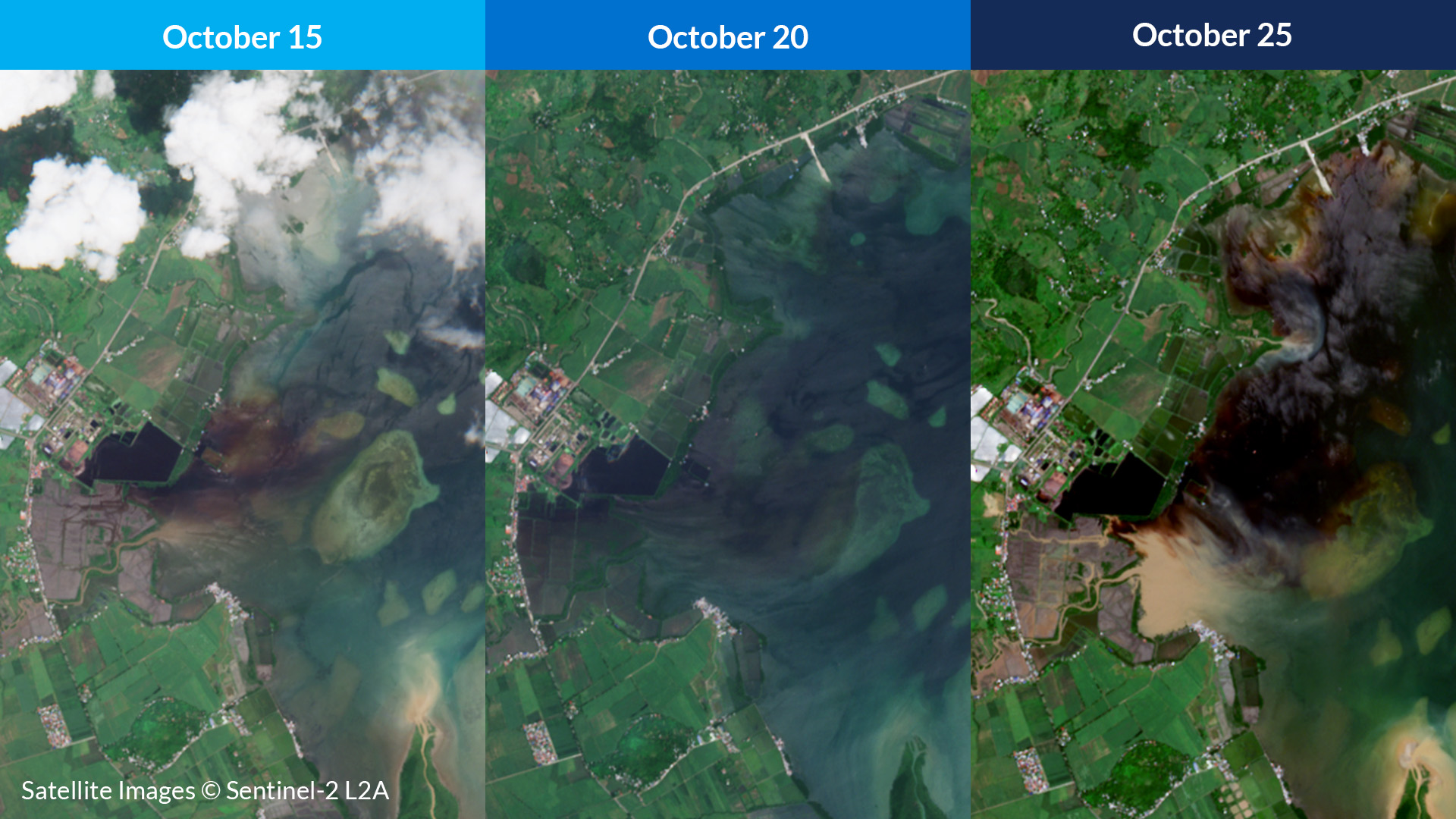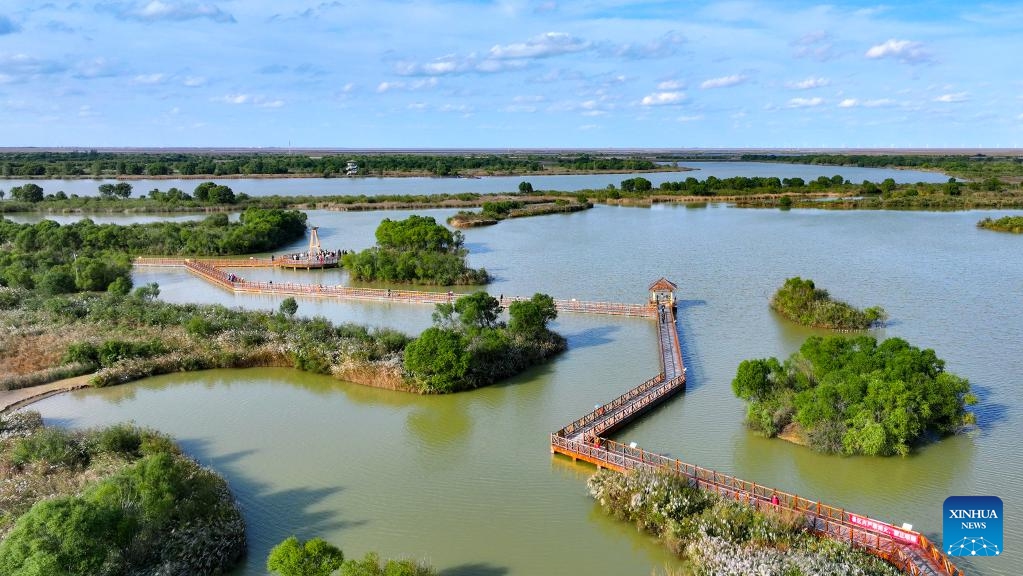Ethanol plant spills harmful wastewater into Philippine marine reserve – Mongabay

Report on the Ethanol Distillery Spill in Bais Bay and its Implications for Sustainable Development Goals
1.0 Incident Overview
A significant environmental incident occurred on October 24, when a retaining wall at an ethanol distillery’s wastewater pond collapsed. This resulted in the discharge of approximately 255,000 cubic meters of wastewater into Bais Bay, located within the Tañon Strait Protected Seascape (TSPS) in the Philippines. The facility is operated by Universal Robina Corporation (URC).
2.0 Impact on Sustainable Development Goals (SDGs)
The chemical spill represents a critical setback for several United Nations Sustainable Development Goals (SDGs), posing a direct threat to environmental integrity, economic stability, and community well-being in the region. The primary SDGs affected include:
- SDG 14 (Life Below Water): Direct pollution of a major marine protected area, threatening biodiversity and ecosystem health.
- SDG 8 (Decent Work and Economic Growth): Disruption of local livelihoods dependent on fishing and sustainable tourism.
- SDG 1 (No Poverty) & SDG 2 (Zero Hunger): Jeopardized food security and income for thousands of residents in coastal communities.
- SDG 12 (Responsible Consumption and Production): Highlights a failure in corporate environmental management and industrial waste containment.
- SDG 16 (Peace, Justice and Strong Institutions): Raises critical questions regarding corporate accountability and the enforcement of environmental regulations.
3.0 Environmental Consequences and Contradiction of SDG 14 (Life Below Water)
The spill has caused severe environmental degradation, directly contravening the objectives of SDG 14 to conserve and sustainably use marine resources.
- Ecosystem Contamination: The Tañon Strait Protected Seascape, a vital habitat for approximately 14 species of whales and dolphins, is now under threat. The spill can disrupt nutrient cycling and food web stability.
- Habitat Destruction: Authorities report visible discoloration across North Bais Bay. The pollution poses a long-term risk to sensitive benthic habitats, including mangrove forests, coral reefs, and seagrass beds, undermining SDG Target 14.2 on protecting marine and coastal ecosystems.
- Marine Pollution: The incident is a significant case of land-based pollution affecting a marine environment, directly conflicting with SDG Target 14.1, which aims to prevent and significantly reduce marine pollution of all kinds.
4.0 Socio-Economic Repercussions and Impacts on SDGs 1, 2, and 8
The spill has had immediate and severe socio-economic consequences for local communities, undermining progress toward poverty alleviation, food security, and sustainable economic growth.
- Impact on Livelihoods (SDG 8): An estimated 3,000 fisherfolk and 17 coastal villages have been affected. The government has suspended all tourism activities, including dolphin watching, eliminating a key source of local income and hindering efforts to promote sustainable tourism under SDG Target 8.9.
- Food Security and Poverty (SDG 1 & SDG 2): The Bureau of Fisheries and Aquatic Resources issued an advisory against the harvesting and consumption of all marine life from the affected area. This action directly impacts the food security and economic stability of communities reliant on fishing.
5.0 Corporate Accountability and Institutional Response (SDGs 12 and 16)
The response to the spill involves corporate actions, government oversight, and calls for justice from civil society, reflecting the principles of SDG 12 and SDG 16.
- Corporate Responsibility (SDG 12): Universal Robina Corporation (URC) attributed the collapse to “earthquake-induced cracks, exacerbated by unexpected continuous heavy rains.” The company has stated it is coordinating with authorities for cleanup and compliance, which aligns with the principles of responsible production. However, the incident itself points to a failure in achieving environmentally sound management of industrial waste (SDG Target 12.4).
- Government and Institutional Action (SDG 16): The Department of Environment and Natural Resources’ Environmental Management Bureau (DENR-EMB) has confirmed that URC will be held liable for compensation and penalties. Marine conservation group Oceana has demanded full accountability, urging that the corporation be held responsible for reparations and the implementation of preventive measures to ensure such a disaster does not recur, reinforcing the need for effective and accountable institutions.
Analysis of Sustainable Development Goals in the Article
1. Which SDGs are addressed or connected to the issues highlighted in the article?
-
SDG 14: Life Below Water
- The article’s central theme is a chemical spill directly impacting a marine protected area, Bais Bay, which is part of the Tañon Strait Protected Seascape. It discusses the significant risks to marine biodiversity, including 14 species of whales and dolphins, coral reefs, and seagrass beds. This directly relates to the goal of conserving and sustainably using the oceans, seas, and marine resources.
-
SDG 8: Decent Work and Economic Growth
- The spill has severe economic consequences for the local community. The article states that at least 3,000 fisherfolk are affected, and tourism activities like dolphin watching have been suspended. This highlights the link between environmental health and the economic livelihoods that depend on it, connecting to the goal of promoting sustained, inclusive, and sustainable economic growth.
-
SDG 12: Responsible Consumption and Production
- The incident originated from the collapse of a wastewater pond at an ethanol distillery. This points to issues with industrial waste management and corporate responsibility for production processes. The call for the company to “ensure proper cleanup and full compliance with environmental standards” and prevent future disasters aligns with the goal of ensuring sustainable consumption and production patterns.
-
SDG 6: Clean Water and Sanitation
- The release of 255,000 cubic meters of wastewater into Bais Bay is a major water pollution event. This directly contravenes the goal of ensuring the availability and sustainable management of water and sanitation for all, specifically the aspect of improving water quality by reducing pollution.
2. What specific targets under those SDGs can be identified based on the article’s content?
-
Under SDG 14 (Life Below Water):
- Target 14.1: “By 2025, prevent and significantly reduce marine pollution of all kinds, in particular from land-based activities, including marine debris and nutrient pollution.” The article describes a massive spill of industrial wastewater from a land-based distillery, which is a clear example of the type of pollution this target aims to prevent.
- Target 14.2: “By 2020, sustainably manage and protect marine and coastal ecosystems to avoid significant adverse impacts…” The spill occurred in the Tañon Strait Protected Seascape, a protected marine area. The article explicitly mentions the “active threat of being adversely impacted” and the potential for “long-lasting damage to its benthic habitats, coral reefs, and seagrass beds.”
- Target 14.5: “By 2020, conserve at least 10 per cent of coastal and marine areas…” The article highlights the vulnerability of such conserved areas, stating the spill puts “one of the Philippines’ largest marine protected areas at risk,” underscoring the importance of effectively managing and protecting these designated zones.
-
Under SDG 8 (Decent Work and Economic Growth):
- Target 8.9: “By 2030, devise and implement policies to promote sustainable tourism that creates jobs and promotes local culture and products.” The immediate suspension of “all tourism activities, including dolphin watching and swimming” demonstrates how environmental disasters directly undermine sustainable tourism and the local jobs it supports.
-
Under SDG 12 (Responsible Consumption and Production):
- Target 12.4: “By 2020, achieve the environmentally sound management of chemicals and all wastes throughout their life cycle… and significantly reduce their release to air, water and soil to minimize their adverse impacts on human health and the environment.” The collapse of the wastewater pond wall signifies a failure in the environmentally sound management of industrial waste, leading to a massive release into the water.
-
Under SDG 6 (Clean Water and Sanitation):
- Target 6.3: “By 2030, improve water quality by reducing pollution, eliminating dumping and minimizing release of hazardous chemicals and materials…” The spill is a direct setback to this target, as it involves the massive release of polluting wastewater into a major bay, degrading its water quality.
3. Are there any indicators mentioned or implied in the article that can be used to measure progress towards the identified targets?
-
Indicators for Marine Pollution and Ecosystem Health (SDG 14):
- Volume of wastewater spilled: The article specifies “about 255,000 cubic meters (67 million gallons) of wastewater,” which is a direct quantitative indicator of the pollution event (relevant to Target 14.1).
- Visible water discoloration: The mention of “visible discoloration across North Bais Bay” serves as a qualitative indicator of water pollution.
- Impact on biodiversity: The article notes the threat to “14 species of whales and dolphins” and damage to “coral reefs, and seagrass beds.” The health and population status of these species and habitats are key indicators of ecosystem integrity (relevant to Target 14.2).
-
Indicators for Economic and Livelihood Impact (SDG 8):
- Number of people affected: The article states that “at least 3,000 fisherfolk and 17 coastal villages were affected,” providing a quantitative measure of the social and economic impact.
- Suspension of economic activities: The official order “suspending all tourism activities” and the advisory “warning the public against harvesting and consuming fish” are direct indicators of the disruption to local economies and livelihoods (relevant to Target 8.9).
- Loss of income: The demand for the company to “compensate the victims justly and fully for loss of income and livelihood” implies that loss of income is a key measurable impact.
-
Indicators for Waste Management (SDG 12):
- Incidence of industrial spills: The event itself—the “collapse” of a “wastewater pond”—is an indicator of failed infrastructure and poor management of industrial waste (relevant to Target 12.4).
4. Summary of SDGs, Targets, and Indicators
| SDGs | Targets | Indicators |
|---|---|---|
| SDG 14: Life Below Water |
|
|
| SDG 8: Decent Work and Economic Growth |
|
|
| SDG 12: Responsible Consumption and Production |
|
|
| SDG 6: Clean Water and Sanitation |
|
|
Source: news.mongabay.com
What is Your Reaction?
 Like
0
Like
0
 Dislike
0
Dislike
0
 Love
0
Love
0
 Funny
0
Funny
0
 Angry
0
Angry
0
 Sad
0
Sad
0
 Wow
0
Wow
0
















































/environment-climate-change-and-health-(ech)/water-sanitation-hygiene-and-health-(wsh)/landfill-tuvalu-36092.tmb-1200v.jpg?sfvrsn=5c21fe40_1#)

.jpg.webp?itok=0ZsAnae9#)

























